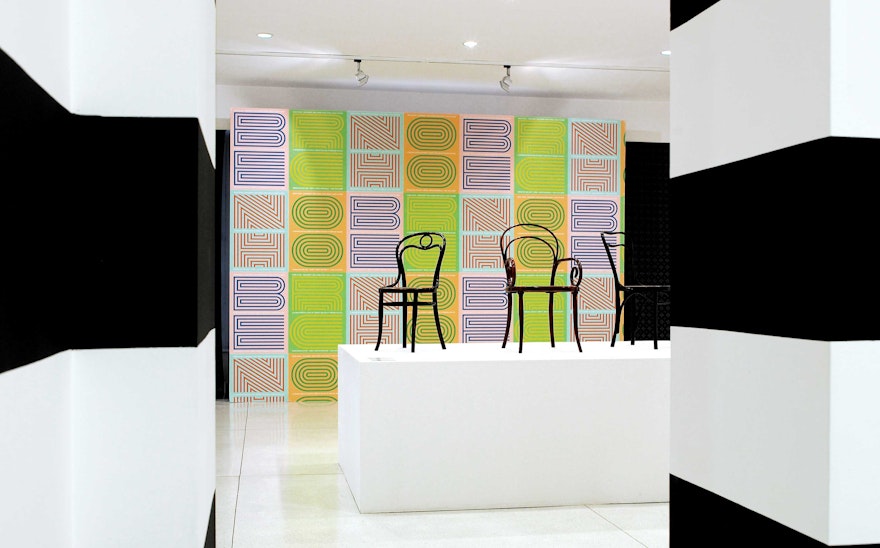



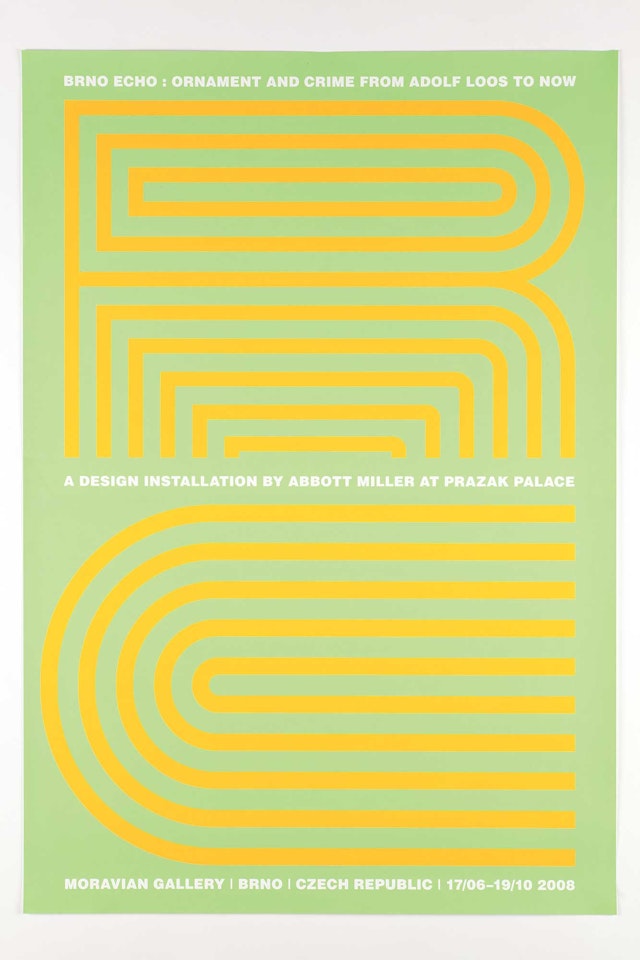
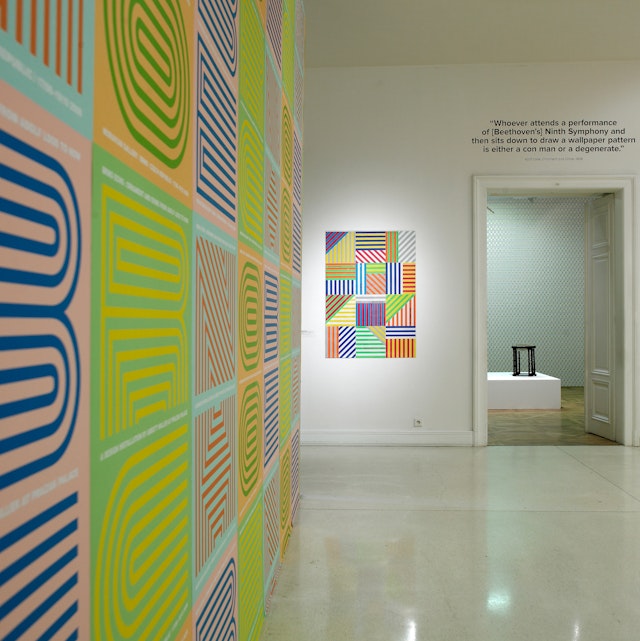
The exhibition creates a kind of graphic echo chamber in which typefaces, posters, textiles and furniture reveal a cosmopolitan dialogue that crosses time, geography and media.

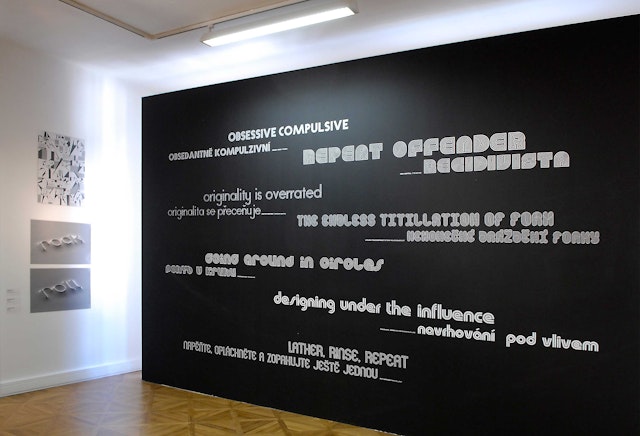
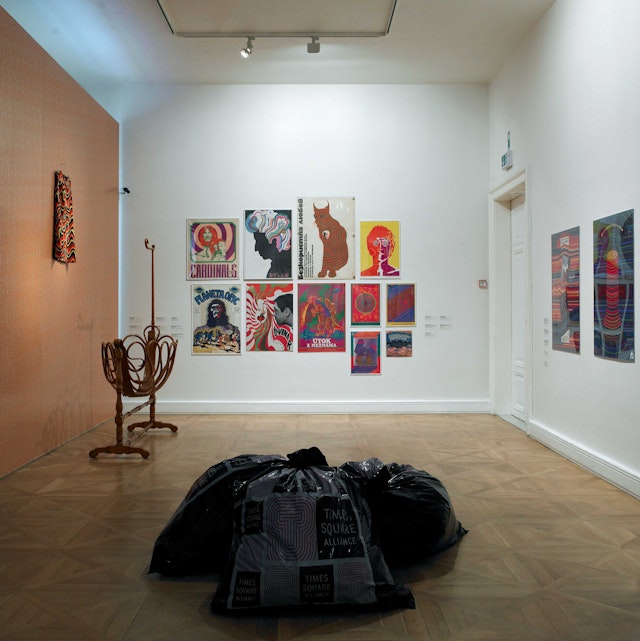


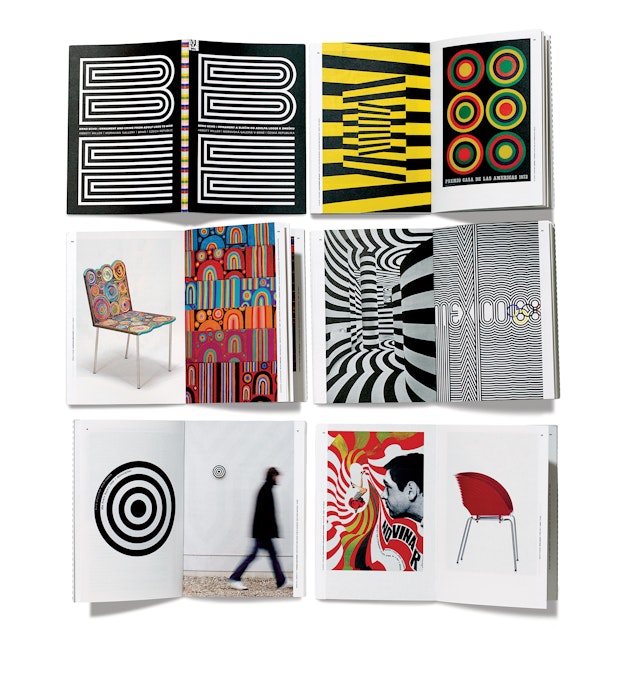
Brno Echo: Ornament and Crime from Adolf Loos to Now, a design exhibition curated and designed by Pentagram, was presented the 23rd International Biennial of Graphic Design Brno, one of Europe’s largest festivals of graphic design.
Brno Echo stages a lively dialogue between historical and contemporary design around the subject of “modern ornament.” Adolf Loos’ 1908 manifesto “Ornament and Crime” serves as the conceptual foundation for the exhibition that looks at the recurrence of concentric lines and patterns that constitute a fundamental grammar of modern ornament, connecting everything from the Wiener Werkstätte through Pop Art to current variants of retro-futurism. The exhibition creates a kind of graphic echo chamber in which typefaces, posters, textiles and furniture reveal a cosmopolitan dialogue that crosses time, geography and media.
In developing the exhibition the designers were drawn to the coincidence of two factors: the original 1964 Biennial logo by Jiri Hadlac and the fact that Adolph Loos, who was born in Brno, designed a very original house for the entertainer Josephine Baker that features black and white stripes. In his essay “Ornament and Crime,” Loos had launched an attack on ornament referring to it as “degenerate” and yet the house he designed for Baker took the idea of ornament and made it the most important part of the house. As a result, the house is superficially very related to much of the decorative design he claimed to hate.
The designers subsequently realized that geometric striping and concentric forms are a type ornamentation that is acceptably modern. This, in turn, led them through a kind of archaeology of concentric striping that links early modernism with other stylistic languages throughout the last century.
Drawing upon various international sources, including the rich collections of the Moravian Gallery, the exhibition features a dozen galleries and over 150 works with textile pieces from Verner Panton, Josef Hoffmann and Dorothy Casonas; furniture from Loos, Hoffmann and Ron Arad; posters from Ralph Schraivogel, Martin Woodtli, Philippe Apeloig and Niklaus Troxler; and, forming the centerpiece of the show, a model of Adolf Loos’ House for Josephine Baker from 1928.
Pentagram has also designed the identity, catalogue and a series of posters for the exhibition. The identity is built from the “B” Hadlac designed for the original Biennial identity, while the posters utilize that letterform to create the full phrase BRNO ECHO. The posters were silkscreened for a deep color saturation that gives them an unmistakable look and feel.
Sector
- Arts & Culture
Discipline
- Exhibitions
Office
- New York
